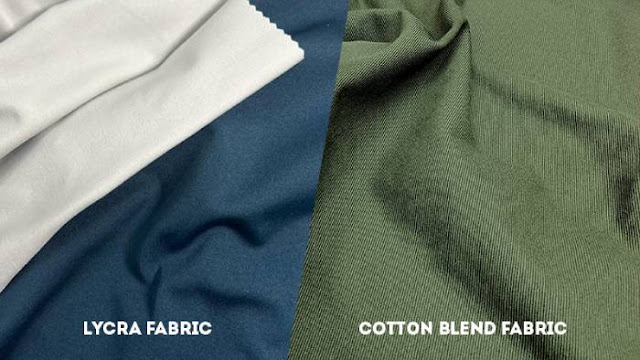Featured
- Get link
- X
- Other Apps
Opulence and Splendour: Fabric in the Italian High Renaissance

Opulence and Splendour: Fabric in the Italian High Renaissance
Giovanni Bellini, Madonna and Child, 1480s
“Dress was hired by way of the Renaissance elite to take place rank and elegance.” William J Connell, present day historian.
In High Renaissance Italian artwork, virtuoso paintings bring an extravagant world of thick piled velvet, metal embroidery and smooth, stiffened silks. This cloth allowed artists to inform wondrous, amazing stories, whipping and swirling inside the wind, circling and puffing up bodies, or floating outwards through the clouds closer to heaven. But more than just a narrative device, the maximum richly textured or adorned material became a powerful, heady symbol of status, reserved for the most divinely non secular, powerful or wealthy figures. Lending them a regal, opulent splendour, cloth lifted them from normal lifestyles into the awe-inspiring, ethereal geographical regions of another international.@ Raed More onlinedigitaltrends
Titian, Bachus and Ariadne, 1523-4
Textiles have been massive business in High Renaissance Italy. By the 15th and sixteenth century, the Italian fabric enterprise had taken off, generating significant quantities of high-priced fabric which includes silks, velvets and damasks. Many have been woven into with valuable metals which include silver and gold, decorating fabrics with complicated, difficult Moorish designs. Others were dyed in severe, deep hues with plant, mineral or insect-based dyes, on occasion in ambitious, repeat styles. These exquisitely made fabrics have been then bought in markets for the duration of Europe.
Lorenzo Lotto, Madonna and Child with Saint Jerome and Saint Nicholas of Tolentino, 1523-4
Wealthy traders funded the industry, even as some even ran their personal fabric turbines, producing bespoke designs with the circle of relatives crest woven in. The Italian, Catholic church become one such client, who commissioned the production of the most costly and high-priced fabrics, realising the theatrical wonder it is able to deliver to their sacred spaces.@ Raed More theslashgear
Giovanni Bellini, Portrait of Doge Leonardo Loredan, 1501
Artists rushed to capture up with those tendencies, conveying impressive levels of realism with richly various textures, surfaces and patterns. In artwork of the time, fabrics absorb or mirror the light, falling into crinkles, creases and folds, draping, wrapping, or completely consuming Biblical, mythological and real characters. Venetian painter Giovanni Bellini led the manner, shooting the herbal fall of light throughout a wide array of cloth sorts. In his Madonna and Child, from the late 1480s, the complex creasing of gentle army, purple and white cloth is painted with placing realism, forming pockets and folds that shimmer in and out of the light. His Doge Leonardo Loredan, 1501, captures the Doge of Venice in his formal attire, as satin material embroidered with wealthy gold thread glistens like mild on water. Simple pleats suggest the dense weight of his clothing as it falls closely onto his shoulders, a symbol of the burden and obligation he need to deliver with him.
Bronzino, Portrait of Eleonora di Toledo, 1545
As encouraged by using Bellini, Venetian painter Lorenzo Lotto persisted to carry the rich surfaces of cloth worn by means of significant figures from Biblical literature. Characterised by deeply saturated colorations and strong tonal comparison, his art work capture with staggering element the lavish floor texture of various material kinds. Madonna and kid with Saint Jerome and Saint Nicholas of Tolentino, 1523-four, accentuates Mary’s sleeve with heightened volume and coloration, permitting it to ripple and crease inside the mild like a fleshy form with a lifestyles of its very own. Over her legs, blue material simmers lightly with a satin sheen, falling into smooth rivulets and creases. In Portrait of a Woman Inspired through Lucretia, 1530-2, the material floor is even more lifelike, as thick, warmly toned velvet bureaucracy massive, dramatic puffs, billowing out and lending his imperative character a luxurious grandeur.@ Raed More fitfulliving
Lorenzo Lotto, Portrait of a Woman Inspired via Lucretia, 1530-2
Titian’s depiction of cloth is softer and fleshier, turning into nearly one with the our bodies it envelops. Bacchus and Ariadne, 1520-3, explores the theatrical sensuality of moving material, as vibrant sunglasses of orange, pink and blue swarm with flickering lifestyles, flowing around figures and lifting off into the air around them. This impact of foreshortened space via windswept cloth is exemplified in Perseus and Andromeda, 1554-fifty six, as Perseus is swept across the air into the ocean in a bid to shop Andromeda. By assessment, in Bronzino’s fabulously decadent portrait of Eleanor di Toledo, 1545, the bodily grandeur of material becomes the main situation of the portray. His wealthy, influential sitter, wife of Cosimo I de Medici, the Grand Duke of Tuscany, wears a softly textured, velvet get dressed made from the famous Renaissance pomegranate print, protected with richly adorned brocade patterning in black and gold. Such is the physical presence of her mesmerising dress that it consumes and eclipses her whole body, taking over a surprising, atmospheric air of mystery this is all its personal.@ Raed More webdigitaltrends
- Get link
- X
- Other Apps
Popular Posts
Difference between Lycra and cotton Lycra
- Get link
- X
- Other Apps
